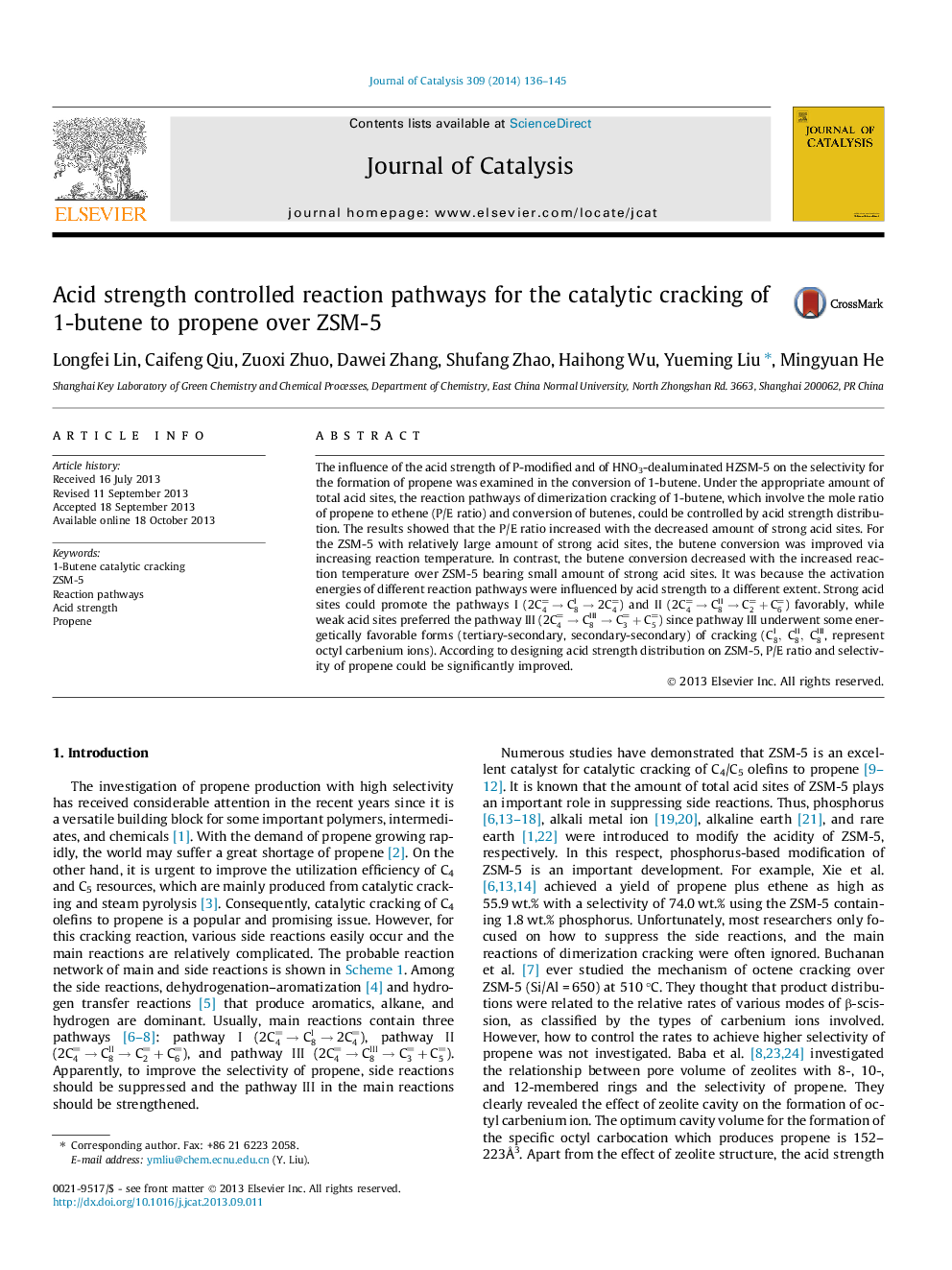| کد مقاله | کد نشریه | سال انتشار | مقاله انگلیسی | نسخه تمام متن |
|---|---|---|---|---|
| 61104 | 47565 | 2014 | 10 صفحه PDF | دانلود رایگان |

• Reaction pathways of catalytic cracking of 1-butene were efficiently controlled by acid strength.
• Pathway II underwent through primary cation, while pathway III proceeded through secondary or tertiary carbenium ion.
• Weak acid sites preferred the pathway III, while pathway II needed strong acid sites to overcome energy barrier.
• Selectivity of propene could be significantly improved through reducing the amount of strong acid sites on HZSM-5.
The influence of the acid strength of P-modified and of HNO3-dealuminated HZSM-5 on the selectivity for the formation of propene was examined in the conversion of 1-butene. Under the appropriate amount of total acid sites, the reaction pathways of dimerization cracking of 1-butene, which involve the mole ratio of propene to ethene (P/E ratio) and conversion of butenes, could be controlled by acid strength distribution. The results showed that the P/E ratio increased with the decreased amount of strong acid sites. For the ZSM-5 with relatively large amount of strong acid sites, the butene conversion was improved via increasing reaction temperature. In contrast, the butene conversion decreased with the increased reaction temperature over ZSM-5 bearing small amount of strong acid sites. It was because the activation energies of different reaction pathways were influenced by acid strength to a different extent. Strong acid sites could promote the pathways I (2C4→C8I→2C4) and II (2C4→C8II→C2+C6) favorably, while weak acid sites preferred the pathway III (2C4→C8III→C3+C5) since pathway III underwent some energetically favorable forms (tertiary-secondary, secondary-secondary) of cracking (C8I,C8II,C8III, represent octyl carbenium ions). According to designing acid strength distribution on ZSM-5, P/E ratio and selectivity of propene could be significantly improved.
The role of acid strength in the control of reaction pathways was investigated. Strong acid sites were in favor of the pathway II, while weak acid sites preferred the pathway III.Figure optionsDownload high-quality image (73 K)Download as PowerPoint slide
Journal: Journal of Catalysis - Volume 309, January 2014, Pages 136–145